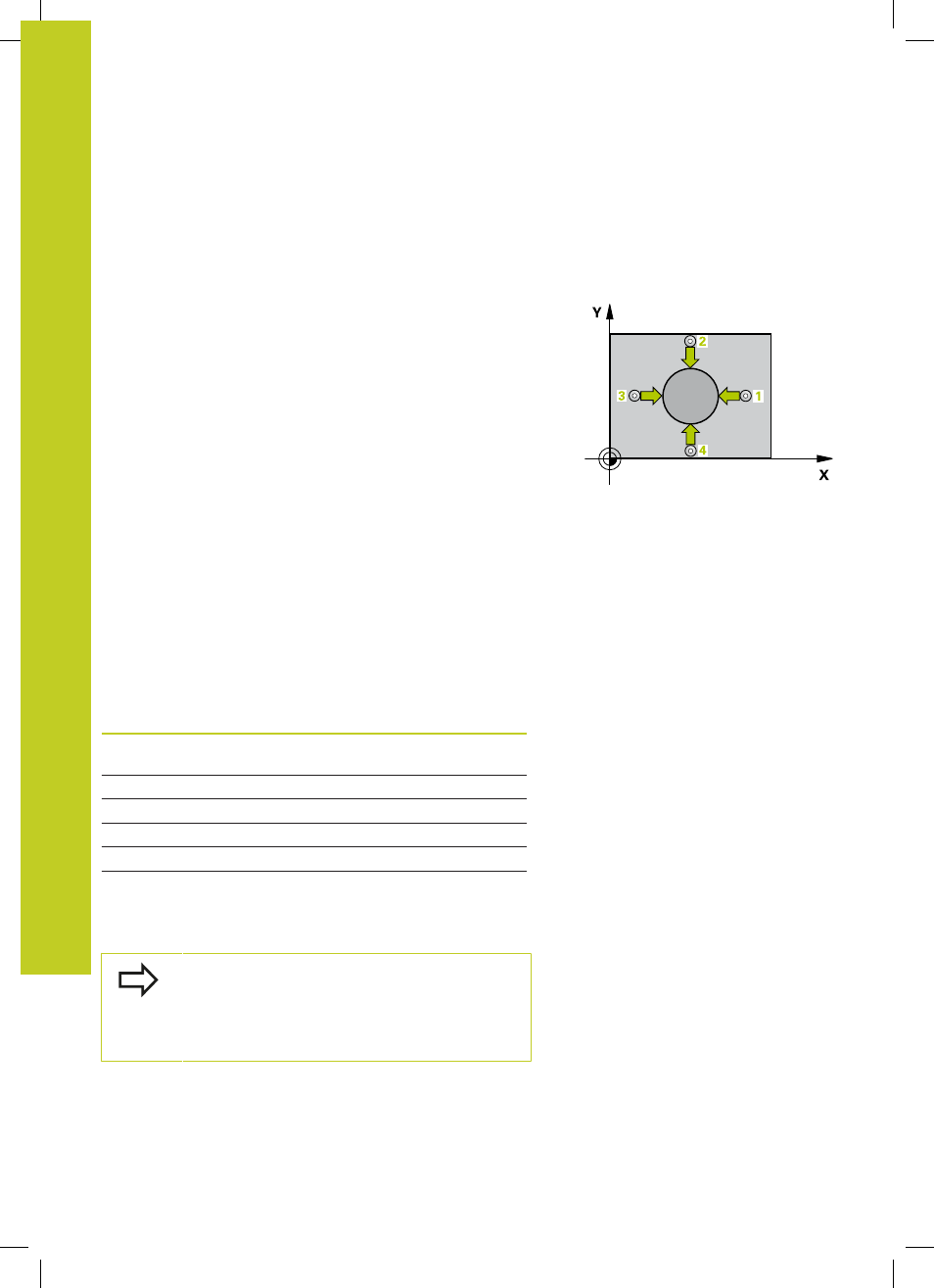Cycle run, Please note while programming – HEIDENHAIN TNC 620 (34056x-04) Cycle programming User Manual
Page 370

Touch Probe Cycles: Automatic Workpiece Inspection
16.6 MEASURE HOLE OUTSIDE (Cycle 422, DIN/ISO: G422, software
option 17)
16
370
TNC 620 | User's Manual Cycle Programming | 5/2013
16.6
MEASURE HOLE OUTSIDE (Cycle 422,
DIN/ISO: G422, software option 17)
Cycle run
Touch Probe Cycle 422 measures the center and diameter of a
circular stud. If you define the corresponding tolerance values in
the cycle, the TNC makes a nominal-to-actual value comparison and
saves the deviation value in system parameters.
1 The TNC positions the touch probe at rapid traverse (value from
FMAX column) following the positioning logic (See "Executing
touch probe cycles", page 280) to the starting point
1
. The TNC
calculates the touch points from the data in the cycle and the
safety clearance from the
SET_UP column of the touch probe
table.
2 Then the touch probe moves to the entered measuring height
and runs the first probing process at the probing feed rate
(column
F). The TNC derives the probing direction automatically
from the programmed starting angle.
3 Then the touch probe moves in a circular arc either at measuring
height or at clearance height to the next starting point
2
and
probes the second touch point.
4 The TNC positions the probe to starting point
3
and then to
starting point
4
to probe the third and fourth touch points.
5 Finally the TNC returns the touch probe to the clearance height
and saves the actual values and the deviations in the following
Q parameters:
Parameter number
Meaning
Q151
Actual value of center in reference
axis
Q152
Actual value of center in minor axis
Q153
Actual value of diameter
Q161
Deviation at center of reference axis
Q162
Deviation at center of minor axis
Q163
Deviation from diameter
Please note while programming:
Before a cycle definition you must have programmed
a tool call to define the touch probe axis.
The smaller the angle, the less accurately the TNC
can calculate the dimensions of the stud. Minimum
input value: 5°
